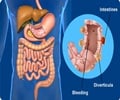Results of a new study highlight the poor dietary diversity with cereals and fats based diet of people in urban slums of Indian capital Delhi.

The people in the studied community were mainly non-vegetarians and majority of the adults and children consumed two main meals a day. Most respondents reported using a combination of some refined vegetable oil along with desi ghee or butter as a cooking medium daily.
Around 56% of households (HHs) reported using 2 or more cooking mediums. The most common cooking medium was refined vegetable oil. The participants consumed snacks that were either homemade or market item. Most of the snacks analyzed were identified to hold trans fatty acids (TFA) ranging from 0.26 - 22.96% of total fatty acids. Consumption of commercially prepared snacks was the primary source of trans fats in the diets of the study community.
Researchers at the Indian Institute of Public Health, Delhi, conclude that an overall contribution of commercially prepared food towards fat intake of poor quality is a cause for concern. This emphasizes the definite impact of urbanization and nutrition transition across diverse communities. Policies should include approaches that raise awareness on healthy diet and lifestyle practices with importance on quantity and quality of nutrient intake. This is, even more, imperative in communities that may have low awareness of disease implications and limited resources for and access to healthier options.
The study results on intakes of different food groups are consistent with earlier studies showing an inadequate intake of pulses, roots and tubers, other vegetables, green leafy vegetables (GLVs) and fruits but a higher intake than advised of fats and oils, milk and sugars in adults. Though the consumption of cereals, meats, fats, and sugars were adequate, intake of pulses and milk along with very low intakes of vegetables, roots and tubers, green leafy vegetables and fruits were low.
The macronutrient (e.g., fat, protein, carbohydrate) intake was adequate, but micronutrient intakes were below the recommended level. More than two- thirds of the study population had inadequate vitamin A and riboflavin intake while almost half of the population showed inadequate folate (a salt or ester of folic acid) intake.
Reference:
Archna Singh, Vidhu Gupta, Arpita Ghosh, Karen Lock, Suparna Ghosh-Jerath http://bmcnutr.biomedcentral.com/ DOI 10.1186/s40795-015-0018-6Source-Medindia















